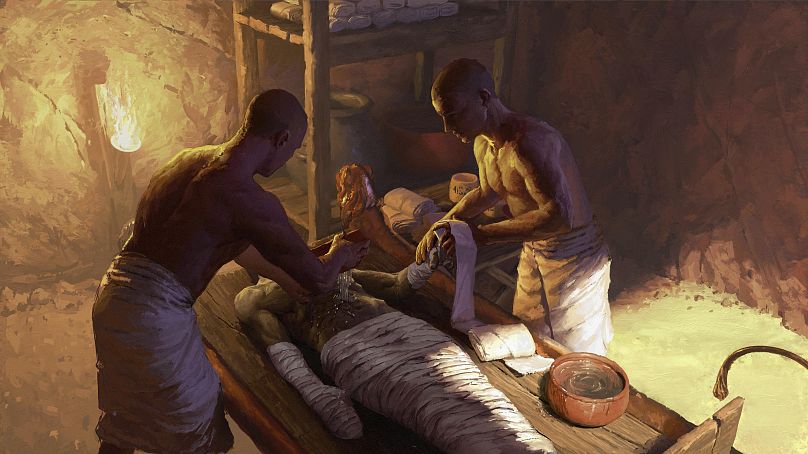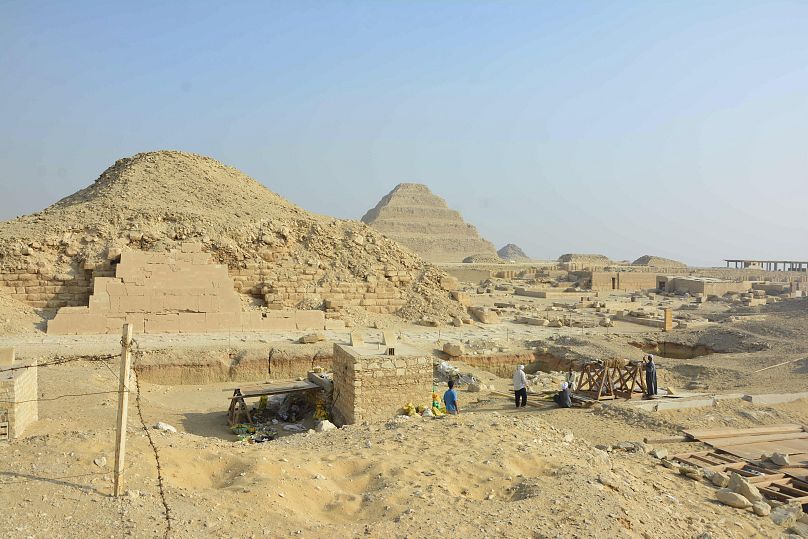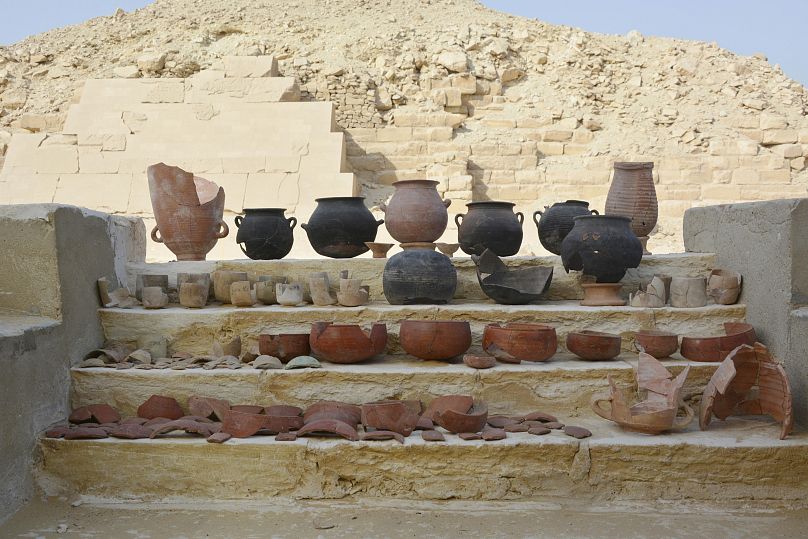Have you ever wondered how the Ancient Egyptians managed to preserve their dead for thousands of years?
Well a new study published in the journal Nature has shed new light on the Ancient Egyptian puzzling process of mummification.
The research, which was based on a rare archaeological discovery at the Saqqara burial grounds, has allowed scientists to better understand the recipes used to preserve the bodies of the dead for thousands of years.
The discovery, which was made by study author Ramadan Hussein in 2016, was an embalming workshop that contained a trove of pottery more than 2,500 years old.
Many of these jars were still inscribed with instructions like “to wash” or “to put on his head”.

This illustration depicts an embalming process in an underground chamber in Saqqara, Egypt
By matching the writing on the outside of the vessels with the chemical traces inside, researchers were able to gain new insights into the ingredients used in mummification.
“Usually the inscriptions are on the so-called model clay beakers that really look like beakers. And they’re really, really tiny. Actually, it’s like this perhaps, you can really handle them very easily,” says Susanne Beck, Egyptologist at the University of Tubingen.
“And they have usually inscriptions in hieratic, which is a handwritten form of hieroglyphs on it, and partially also in demotic. And we also have mixed transcription, hieratic and demotic. So very early demotic, which is also another kind of handwritten hieroglyphs.”
Ingredients from far and wide

An excavation area overlooking the pyramid of Unas and the step pyramid of Djoser in SaqqaraSusanne Beck/ Saqqara Saite Tombs Project, University of Tubingen, Tubingen, Germany

Vessels from an embalming workshop in Saqqara, Egypt.M. Abdelghaffar/ Saqqara Saite Tombs Project, University of Tubingen, Tubingen, Germany.
But the surprises didn’t end there. Interestingly, some of these ingredients were not sourced locally. Resins like dammar and elemi, which are found in the tropical rainforests of Southeast Asia, were used in the mummification process.
This new discovery suggests that trade routes between Egypt and Asia may have existed much earlier than previously thought.
“So I think this is really something to mention. In later times, (in the) Greco-Roman period, we were already aware that there were some trade routes possibly existing, but now we are able to date it back. Because the Saqqara site has gone from the 26th to the 27th Dynasty, according to the ceramics we found, it’s a context. So therefore this is a huge thing, basically,” explains Beck.
Mummification was a pretty complicated process, involving drying out the body, removing the organs, and coating it with all sorts of substances to slow down decay. But now, with the help of these jars, we’ve learned about the secret ingredients that were used to preserve the mummies.
The new study found that several jars labelled as “antiu” contained a mixture of different substances, including animal fat, cedar oil, and juniper resin.
These substances, along with others found in the jars, had key properties that helped preserve the mummies. Plant oils and resins could ward off bacteria and fungi while also improving the smell, while hard materials like beeswax could help keep out water and seal the pores.
Egyptologist Salima Ikram of The American University in Cairo notes that an important next step for the field would be to determine how the Egyptians knew about these substances and why they chose to invest in getting them from so far away.
Ikram also notes that the study helps shed new light on the transformation of a human into “a sacred and divine entity who could live forever” that mummification represented.








